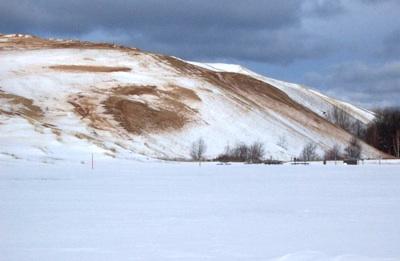A 27-mile stretch of multi-use trail, separate from cars and trucks whizzing nearby, will be built at Sleeping Bear Dunes National Lakeshore thanks to a Federal Transit Administration grant.
The $1.65 million to help extend the Sleeping Bear Heritage Trail comes to the national lakeshore thanks to the collaborative efforts of the lakeshore, the Leelanau Scenic Heritage Route Committee, and the Michigan Department of Transportation. The money comes out of the FTA's Paul S. Sarbanes Transit in Parks program. The funds will be used to construct the SBHT segment from the Dune Climb to Pierce Stocking Scenic Drive in the Lakeshore.
“All the trail partners are very pleased by the grant award,” said Patty O’Donnell of the Northwest Michigan Council of Governments, who coordinates the activities of the Scenic Heritage Route Committee. “The award recognizes that the SBHT will provide a meaningful transportation alternative, as well as an outstanding recreational opportunity for users.”
According to a release from Sleeping Bear, the SBHT will be a "hard-surfaced, multi-use trail paralleling state highways M-22 and M-109 for 27 miles through the Lakeshore. It will provide a safe, non-motorized, multi-use transportation alternative connecting the lakeshore’s main visitor destinations with the neighboring communities of Glen Arbor and Empire. The first segment to be constructed, between Glen Arbor and the Dune Climb, has already received grant funding from the National Scenic Byways program. Construction could begin as early as this fall."
“These investments in our federal lands will give visitors, including persons with disabilities, more options for getting around while inside the parks,” said U.S. Transportation Secretary Ray LaHood. “While making federal lands more accessible, they will also conserve energy and natural resources.”
Congress established the Transit in Parks program to enhance protection of national parks and federal lands and increase visitor enjoyment. Administered by the FTA in partnership with the Department of Interior and the U.S. Forest Service, the program funds capital and planning expenses for alternative transportation systems, such as shuttle buses and bicycle trails, in national parks and public lands. The program goals are to conserve natural, historical, and cultural resources, and reduce congestion and pollution. A complete list of the 47 projects selected can be found at http://www.fta.dot.gov/news/news_events_12236.html.




Add comment